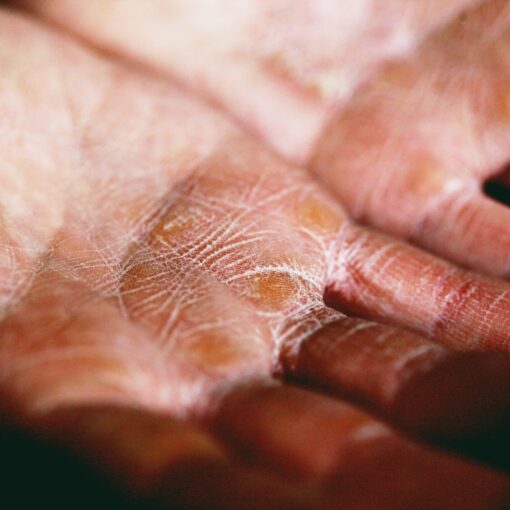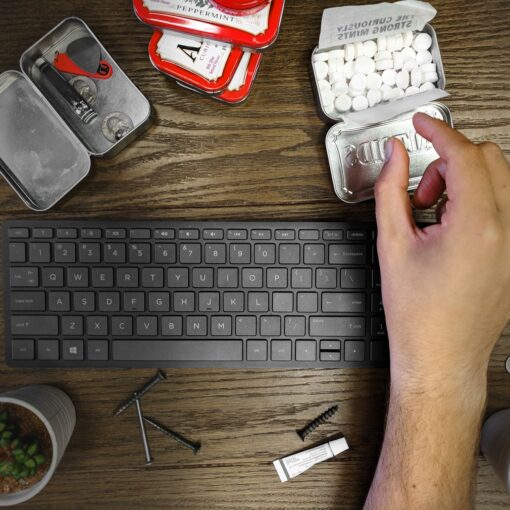Page Menu
Athlete's foot is a common foot ailment that has an impact on up to 10% of the population. It is caused by a fungus that lives on the skin or in socks, shoes or tiles infected with this fungus. As it spreads, athlete's foot can cause itching, burning, cracking and scaling of the affected area. It can also cause redness and blistering. The best way to prevent athlete's foot is to avoid wearing tight-fitting socks or shoes.
Key Concepts and Top Takeaways
– Keep feet dry: Moisture promotes fungal growth; use powder if needed.
– Wear breathable shoes: Choose materials that allow air circulation.
– Change socks regularly: Opt for moisture-wicking fabrics to stay dry.
– Avoid walking barefoot in public places: Protect feet in locker rooms and pools.
– Use antifungal treatments: Apply creams or sprays as directed by a doctor.
– Disinfect footwear: Regularly clean shoes to eliminate fungi.
– Trim nails properly: Keep toenails short and straight to prevent infection.
– Don’t share personal items: Avoid sharing towels, shoes, or socks with others.
– Practice good hygiene: Wash feet daily and dry thoroughly between toes.
– Seek medical advice if symptoms persist: Consult a healthcare professional for persistent issues.
Please Note: This post may contain affiliate links. If you click one of them, we may receive a commission at no extra cost to you. As an Amazon Associate, I earn from qualifying purchases.

Athlete's foot occurs when fungus, which thrives in warm, moist environments like socks and shoes, rubs against skin. The most common symptom is itching or burning on the bottom of the feet. Complications from athlete's foot can range from a blister forming to infections occurring elsewhere on the body. Treatments include antifungal creams, powders, sprays, and oral medication.
Athlete's foot is an itchy, burning, and often blistering condition on the skin of the feet. This fungal infection is typically caused by using communal showers or pools without proper hygiene but can be contracted in other ways as well. The most common signs of this fungal infection are dry cracked skin, blisters, scaling patches of skin, and itching.
Millions of Americans suffer from athlete's foot, with around half of these people experiencing chronic symptoms. This is due to the fungus that causes the condition attacking the skin at its most vulnerable point, between the toes. As a result, athlete's foot creates unpleasant symptoms like itching and scaling, which can lead to severe complications if left unchecked. The fungus that causes athlete's foot can also spread to other areas on the body, which can lead to infections in these locations as well.
The condition can vary in severity, but typically starts out as an itch and progresses to a burning sensation on the soles of the feet. A person may not be able to feel any pain while walking barefoot, but once they put on socks or shoes it becomes very painful.
Symptoms of Athlete's Foot
Athlete's foot is a common skin infection that is caused by the fungus, Trichophyton rubrum. It commonly affects the feet but can also affect other areas of the body such as the groin area. Athlete's foot infections are contagious and are transmitted by direct contact with an infected person or object, or indirectly via another person who has touched the infected object.
Athlete's foot is a skin infection in the feet. The fungus athlete's foot grows in warm, moist places on the skin, including in between the toes and around the heel. The painless rash can cause itching, scaling, cracking, redness, and inflammation. If left untreated for too long, it will worsen and become more difficult to treat.
Athlete's foot is a term that is used to describe a fungal infection of the skin on the feet, or occasionally other parts of the body. Athletes foot commonly spreads in warm, moist conditions and can be contracted from an infected person, contaminated items such as towels, shoes, locker rooms and floors, or from contact with contaminated surfaces. Symptoms include skin peeling on the soles of the feet or toes with red patches.
Dry skin on the bottom of the foot is one of the symptoms of athlete's foot, which is caused by an inflammation of the skin caused by a fungus. Athlete's foot occurs more often in men than women and usually starts on either side of the inside edge of the big toe. If left untreated, athlete's foot can spread to other parts of the body and lead to more serious health issues.
The infection causes chronic itching, burning, and sometimes painful blisters. It is most common in people who wear tight shoes or socks for long periods of time. The infection can be transferred from one person to another by walking barefoot in wet locker rooms. To avoid getting the infection, always wash your feet after walking around to avoid cross-contamination.
Rough, scaling patches on the feet and between toes is often a sign of athlete's Foot but can also occur with other fungal or bacterial infections. Athlete's foot is hard to treat and is contagious, so it's important to take care of the problem before it spreads to loved ones and coworkers. It starts as an injury to the skin and develops into a chronic condition that can be managed by using over-the-counter fungicidal creams or lotions.
The symptoms of athlete's foot include itching and inflammation, which can sometimes lead to blisters and peeling skin. Itching may be a sign that you could have athlete's foot because it is one of the first symptoms to appear.
There are different types of Athlete's Foot that all manifest with the same symptoms. For example, Ringworm is a type of Athlete's Foot that is transmitted by close contact with animals. A need for greater awareness of the condition is necessary to prevent it from spreading to others and becoming problematic.
Causes of Athlete's Foot
The fungus that causes athlete's foot lives in the warm, dark, and moist environment inside the shoe, where it remains alive for extended periods of time. It can also spread to surfaces in the home when people walk across wet floors without properly drying their feet. Athlete's foot infections are so common because they are easy to contract and difficult to treat.
Athlete's Foot is a fungal infection of the foot caused by the dermatophytes Trichophyton, Epidermophyton or Microsporum. The itchiness or irritation on the feet that is experienced in this condition can be attributed to any of these three fungi. Athlete's Foot affects over 20 million people in the United States and with such a high percentage of cases it is important to understand why one would experience itching in this condition.
It may also be contracted from contaminated shoes. When they break down, the fungus releases spores which stick to the feet and thrive in the sweat and dirt found on foot soles. This leads to infection and inflammation of the skin between toes or along the sides of the feet.
It can be acquired from walking barefoot in contaminated environments, such as locker rooms or swimming pools. In addition, you can get athlete's foot from sharing socks with someone who has the infection, as well as touching the fungi that cause it. If you have been exposed to any of these sources, your feet may start itching and become red and scaly within two weeks.
Athlete's Foot is a common condition that occurs as a result of an overgrowth of the yeast on the skin.
The infection can be due to a number of factors, including tight socks and shoes, having a weakened immune system, wearing damp clothes, and excessive sweating.
Athlete's Foot is caused by an overgrowth of yeast on the skin, which can be treated using antifungal creams or powders.
Risk Factors for Athlete's Foot
The American Academy of Dermatology warns that Athlete's Foot is caused by fungus that live on the skin. The fungus thrives in environments that are moist and warm, like sweaty socks or moldy showers. Risk Factors for Athlete's Foot commonly include athletes who exercise in areas with high humidity, children who have chronic wet feet, people who wear shoes without socks, people who have diabetes or weakened immune systems, and people who have allergies to yeast.
Risk factors for athlete's foot include: the wearing of closed shoes, tight-fitting socks and any skin contact with a contaminated surface. Athlete's foot is caused by a fungus that thrives in warm, moist environments such as those found in locker rooms. If you have athlete's foot, there are several routes of treatment, including topical creams and medications to combat the underlying fungus.
The main risk factor for athlete's foot is moisture, either from perspiration or water. As with other skin conditions, athletes are more susceptible; they perspire more, wear tight-fitting clothing that traps moisture, and often share their gear.
The recent spread of athlete's foot has been correlated with a number of factors, including changes in temperature and moisture. As the warm, wet days turn to cooler, dry days, people take off their shoes more often and come into contact with moist surfaces that have been infected by the fungi that cause athlete's foot. The article will explore what athletes can do to prevent this uncomfortable infection, as well as how they can help themselves heal from it.
Moisture from sweat and from the air is a risk factor for Athlete's Foot. It can also be passed from other people. Moisture facilitates the overgrowth of the fungus which causes the condition. If you have Athlete's Foot, you should avoid places where there is a lot of moisture, such as pools, locker rooms, and public showers.
Moisture is one of the most important risk factors in acquiring Athlete's Foot, which is a fungal infection or inflammation of the skin between the toes or other parts of the foot. It is typically caused by excessive sweating, moist socks or shoes, and damp environments.
#1 Moisture facilitates growth of fungi to produce smelly feet.
#2 Damp environments provide the perfect breeding ground for harmful strains of fungi.
Many people are not aware of the risks of wearing shoes without socks, but this can lead to infections, blisters, and athlete's foot. Athlete's foot is a fungal infection that affects more than 5% of Americans annually. It is most prevalent in sports enthusiasts who have had prolonged exposure to wet surfaces. People who wear shoes without socks are at high risk for getting athlete's foot because they are increasing their chances of coming in contact with fungi on the floor.
Diabetics are also at risk for Athlete's Foot, a common skin infection caused by fungus between the toes. In addition to being unable to manage blood sugar levels, diabetic foot diseases have been linked to obesity, peripheral vascular disease, and other circulatory problems. Diabetes is a risk factor for athlete's foot because it can cause nerve damage in the feet and lead to ulcerations on the skin. If left untreated, this can result in an increased likelihood of infection.
It is most common in people who wear tight, sweaty shoes and who have diabetes or a weakened immune system. The fungus that causes athlete's foot can live outside of the body and spread easily by walking barefoot on contaminated surfaces such as gym floors, locker rooms, and public pools.
Over the past decade, research has shown that people with allergies to yeast often have a higher risk of developing Athlete's Foot. The link between yeast and foot infections is likely due to the fact that yeast is found in many different kinds of food, and when someone who has yeast allergies comes in contact with these foods and their surfaces, they will be at risk for an allergic reaction. When this happens, the person usually has a raised rash where there is contact with the allergen.
Excessive sweating and shared water bottles in the locker room can help spread Athlete's Foot between teammates; however, a study out of the University of California concluded that there is also an increased risk for developing Athlete's Foot for athletes who are allergic to yeast.
Some people suffer from allergies to yeast, which can lead to Athlete’s Foot. The fungus that causes Athlete's Foot is actually part of the yeast family. When the skin becomes dry or irritated, it is more susceptible to infection by fungus. The moisture in sweat and water traps the fungus, creating a breeding ground for fungi to thrive. For those who are allergic to yeast, this makes them more at risk for developing Athletes Foot because these conditions will favor their condition.
Experts suggest that the risk of getting it can be reduced by not sharing shoes with others. Sharing shoes can lead to the fungal infection because of the fungus present on the shoe. The fungus will grow in moist areas, which is why athlete's feet are typically found on toes and between the toes. The fungus is transferred from person to person when touching their feet with shoes that both people have previously worn.
Prevention is the key to minimizing the risk of developing athlete's foot. Remember that athlete's foot is not just a cosmetic condition; it can also be quite painful and cause long-term complications.
The key to prevention is keeping your feet clean, dry, and free of moisture. Use an alcohol-based product after showering or bathing to remove any oils or bacteria from the skin. Wear sandals in public places to keep your feet completely covered, so they are not exposed to dirt.
Complications From Athlete's Foot
It can cause itching, swelling, and pain; and sometimes leads to more serious complications such as chronic skin conditions and persistent itching. This is a type of fungus that thrives in warm and moist environments such as shoes and socks. If left untreated, this fungus can cause dry skin on the feet and toes.
Athlete's foot may cause redness, itching, blisters, peeling skin and cracks in the corners of the mouth. It can also lead to dry skin as a complication. For some people, it takes weeks for the condition to clear up. If you have had Athlete's foot, it is possible that the fungus may have spread to your skin, which can lead to dry skin. This can be accompanied by itchiness and irritation. Itching and dry skin are clues that you may need to visit a doctor for treatment.
The itching of this disease can be excruciating, making it hard to sleep or concentrate on anything else. Itching can also occur on the bottoms of the feet. This condition can also cause burning or pain on top of the skin, which becomes increasingly worse when you are wearing shoes or sitting down for an extended period of time.
One of the most common complications from athlete's foot is swelling in the feet. This swelling can be intense and may last for some time. There are many home remedies that can help reduce this swelling, but if they do not work, it is important to be seen by a doctor.
When an athlete develops Athlete's Foot, pain will usually follow. This is because the fungus that causes the condition thrives in warm, moist conditions. The fungal infection can be treated with topical medications or oral antifungal agents, but it may take several weeks for the pain to disappear.
This condition may lead to chronic skin conditions such as erythema, lichenification, and scaling. Patients with chronic skin conditions are more likely to develop skin cancer. Chronic skin conditions can be prevented by using topical agents like econazole or clotrimazole, for example.
The fungus thrives in moist environments, so prevention of athlete's foot is primarily about wearing dry clothing and avoiding wet areas. It can be treated by topical creams or over-the-counter oral medication.
Treatment for Athlete's Foot
Treatments include antifungal creams, powders, sprays, and oral medication. Athlete's foot can be treated with topical antifungal medicine which you apply to the infected area, but it must be applied daily for several weeks to get rid of all the fungus.
There are many treatments for athlete's foot, but it typically resolves without treatment. However, if the skin is broken or irritated, an over-the-counter medication can be used to relieve symptoms. There are many medications that can be used to treat athlete's foot.
There are many treatments available to combat athlete's foot, including antifungal creams. Antifungal creams are an effective treatment for this condition, but they are not always guaranteed to work.
There are many over the counter treatments available, but most people stop using them because they are not effective or have side effects they don't want to put up with. For athletes, this is an especially big problem because rigorous training can aggravate this condition. However, there is a new treatment that does not involve any medication, just rubbing powder on the feet every day after bathing.
Oral medications are typically prescribed to treat athlete's foot, which is a type of fungal infection. There are many oral medications available to treat athlete's foot, but the most common are Lamisil and Lotrisone. Oral medications have the advantage of being convenient because they can be taken at home without having to go see a doctor. Oral medication has also been found to be just as effective as topical treatments in clearing up athlete's foot infections for one year or more.
Athlete's foot is an easy condition to manage. The first step is to eliminate any moisture that may be present on the feet. After that, use the appropriate antifungal cream for five consecutive days to relieve symptoms and prevent recurrence.
Common Questions About Athlete's Foot
What is the main cause of athlete's foot? The main cause of athlete's foot is a fungus that lives on the skin and in warm, moist places. Athlete's foot can be contracted by walking barefoot in wet, infected areas, such as locker rooms and shower areas. The fungi are spread to other parts of the body by contact with an infected person or contaminated surfaces. The mildest case of athlete's foot is characterized by itching, burning, flaking, cracking or peeling skin that may be red or scaly.
Does vinegar help athletes foot? Scientists have been looking into the effectiveness of vinegar in fighting this fungus. A recent study found that vinegar is just as effective as Lamisil, a medication used to treat fungi infections. In addition, people with athlete's foot were more satisfied with vinegar than Lamisil. Vinegar also has less side effects and can be purchased at most grocery stores.
What is athlete's foot look like? Athlete's foot, also known as Tinea Pedis, is a fungal infection that affects the feet. The condition is very common, and it often occurs in wet, sweaty areas such as gym showers or locker rooms. Athlete's foot can be very difficult to cure and can make your skin itch and turn red. It is important to identify the symptoms of athlete's foot as soon as possible, so you can take care of it before it worsens.
How do you stop athlete's foot from spreading? Athlete's foot is an infection that can spread to surrounding toes, fingers, and even other parts of the body. The best way to stop the infection from spreading is by not allowing it to come into contact with someone else. It can be challenging to avoid contact with other people, but it is possible. Several people have developed athlete's foot due to sharing bath water or personal items like towels.
What can be mistaken for athlete's foot? Athlete's foot is a common skin infection, but it's not the only possible culprit. The fungus that causes athlete's foot (known as tinea pedis) may also cause other skin problems like calluses or corns on your feet. You should see a doctor if you suspect that you might have athlete's foot, because it can't be self-diagnosed.
How do I clean my shower after athlete's foot? Athlete's foot is a kind of fungus that manifests itself in the feet and spreads to other areas if it is not treated. After an infection manifests, it may be necessary to take measures to prevent reinfection. For example, showering with a chlorine-based cleaner will kill the fungus and promote good hygiene.
Does rubbing alcohol get rid of athlete's foot? There are many ways to eradicate athlete’s foot but rubbing alcohol does not seem to be one of them. There is no scientific evidence that supports the use of rubbing alcohol on athlete’s foot, and doctors agree that it should not be used on this condition. Alcohol dries the skin, which leads to further irritation for athletes with this condition, who already have dry feet.
What are the stages of athlete's foot? Athlete's foot is a common skin condition that results from a fungal infection. The microscopic fungus, Tinea Pedis, overgrows on the feet and thrives in warm, moist environments. Its symptoms include scaling, flaking, itching, and burning. There are three stages of athlete's foot: acute vesicular stage, chronic vesicular stage, and chronic macerated stage.
Should you moisturize athlete's foot? Athlete's foot is a fungal infection of the skin. It can be painful and embarrassing, but don't despair! Moisturizing your feet can actually help to prevent and ease the pain of athlete's foot. It is important to go see a doctor and get checked out and treated, but in the meantime, you can do some things at home to ease the itching and burning that comes along with this condition.
Should I sleep with socks on with athlete's foot? Athlete's foot is a fungal infection that can be uncomfortable and embarrassing. It is most common in people with compromised immune systems and in the moist areas of the body such as between the toes, arches, or fingers. There are many treatments for athlete's foot, but one treatment you may not have heard of is keeping your feet warm at night by wearing socks.
What kills athlete's foot instantly? Athlete’s foot is a common infection that can be caused by an excessive amount of moisture in your shoes. There are many home remedies for athlete's foot including tea tree oil, lotions, and over the counter medications. The easiest way to get rid of athlete's foot is with a topical treatment called Tinactin.
When should I go to the doctor for athlete's foot? Athlete's foot is a fungal infection that often presents as scaling and peeling skin on the soles of the feet and between the toes. The condition typically starts with an itchiness on the bottom of the feet. Treating athlete's foot early can help prevent it from spreading to other areas of the body, so it's important to have a doctor diagnose what you have if you experience any symptoms.
Does athlete's foot stink? When you have athlete's foot, it can be difficult to cover up the smell. The fungus that causes athlete's foot produces a thick discharge that contains fatty acids, which produce an odor. It can be difficult to wash this discharge off of one's feet, so it often sits on the skin and gets trapped in socks, shoes, and other clothing. This all smells really funky!
How long does athlete's foot take to heal? The first thing you need to know about athlete's foot is that it will never completely heal or go away. It may seem like the condition is gone, but it's only healed on the surface. There are two types of athlete's foot: interdigital and plantar. Interdigital typically heals within 2-8 weeks, while plantar takes 8-12 weeks.
Does athlete's foot go away on its own? The infection starts when skin becomes irritated and small wounds on the skin allow fungus to thrive. This infection can be embarrassing for anyone to experience, but it is most common among athletes who sweat heavily or wear tight shoes. If left untreated, this condition will recur again and again, causing more irritation and discomfort with each new flare-up.
What will happen if athlete's foot is left untreated? If left untreated, athlete's foot can lead to other complications. The condition is typically caused by fungal infections contracted after walking barefoot in public places or wearing damp socks or shoes. Once athlete's foot sets in, skin will blister, peel and itch. If not treated, the infection will worsen and can potentially cause serious problems such as athlete's cellulitis, which occurs when fungus spreads through the lymph nodes.
If athlete's foot is left untreated, the fungus will continue to grow. This can lead to more serious complications with the skin, nails, or even with other organs. The worst-case scenario with this condition is that it could spread to the lungs.
Athlete's foot is a common fungal infection of the skin on one's feet that affects about 50% of Americans at one time or another. It is also called tinea pedis and ringworm of the foot.
Athlete's foot is a common fungal infection that can be spread through contact with the fungus, contaminated surfaces, or other people. When left untreated, athlete's foot can lead to several complications including bacterial infection, inflammation of the nail bed, and secondary infections. It is important to not only address athlete's foot with topical treatments, but also to take steps to reduce contact that could cause transmission. These steps include taking off shoes when entering the home and changing into dry clothes.
In conclusion, athlete's foot is a common fungal infection, which is typically transmitted through contact with contaminated surfaces. The fungi can enter the body through cracks in the skin, so wearing socks and shoes consistently are key to preventing the spread of athlete's foot. The most common symptom of athlete's foot is intense itching that often occurs within the first few hours after it has been contracted.

Kevin Collier is a seasoned health writer at Otchut.com, specializing in over-the-counter medicines, common medical ailments, and general health topics. With a background in healthcare and a passion for making medical information accessible, Kevin aims to empower readers with knowledge to make informed health decisions. When he's not writing, he enjoys researching the latest in health trends and advocating for wellness in his community.





